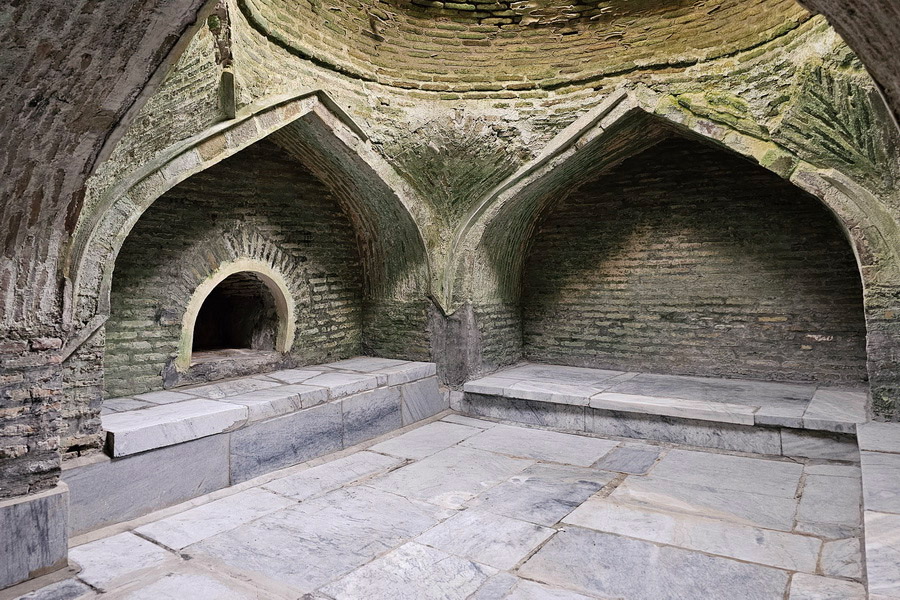
Bath-hammam is one of the most widespread samples of civil architecture in Central Asia. This form of architecture has passed long enough way of development in Central Asia. Since ancient times, swimming pools and bath houses had been an integral part of town-planning.
It is possible to track the general principle of town-planning in history of bath houses construction. Often, pools were built as a part of palace complexes and the public buildings located in city centre. If separated, very often they were established in a municipal-economic zone of a city.
According to Narshahi, there were a number of baths in Bukhara in 10th century, and Hammom Khon (“Khan’s Bath”) was the most known of them. By the middle of the 19th century, the number of bath increased up to 16 against 11 baths in Tashkent, and Samarkand had only 8 baths by the beginning of the 20th century.
The baths could be divided into two types depending on their location: city (bazar) and block (guzar). Bazar baths were in direct proximity with trade rows. There was a number of such baths in Bukhara: Hammom Gavkusho, Hammom Hodja Porso, Hammom Sarrofon and Hammom Bozori Kord, one of the oldest bath houses of Bukhara built in 17th century. This bath, like other eastern baths consists of a lobby, a premise for an undressing and soap rooms. Many Central Asian baths had a form of one-storied dome building.
For better conveniences, many baths, were located at a crossroads of streets, closely adjoining other public buildings. Such baths existed in Bukhara and Samarkand and were called “Hammom Kundjak”, that is a “corner bath”. One of such baths still functions in Bukhara near Kalyan Minaret.
The Central Asian baths were mainly built with one room and there was a strict schedule of for men and women in different days of week.
In the East, the baths were built not only in the neighborhood with bazaars and residential areas but also in palaces, at mosques and madrasahs. The example of it is a remained bath of the Anush-khan in Khiva, constructed at the Ak-mosque.
Many of these baths have remained and successfully function today. In particular, there are two functioning baths in Bukhara – Bozori Kord and Hammam Kundjak. Here everyone can plunge into atmosphere of the medieval East.

